| Author |
Message |
|
Julian Reynolds
Location: United Kingdom Joined: 30 Mar 2008
Posts: 271
|
 Posted: Sun 10 Apr, 2011 5:29 am Post subject: Studded Maces Posted: Sun 10 Apr, 2011 5:29 am Post subject: Studded Maces |
 |
|
I've just finished making another pair of these beauties, working out in the fresh air now Spring is here, and taking full advantage of the unseasonably fine weather we’ve been having here in the UK lately.
They are a truly timeless weapon, equally at home on the pages of the Maciejowski bible, the decks of a pirate ship, the trenches of WW1 Flanders, the dusty streets of modern Afghanistan, or the zombie infested suburbs of a future Earth (!).
Here's a little more info, which should hopefully inspire some of you out there to have a go for yourselves:
The wood is beech, dense and hard, with a little light spalting for added colour. I made a pair a few years ago from oak, but this time I fancied a change, and a friend of mine who knows I enjoy playing with wood let me have a stack of very nice beech he rescued from an import/export shipping company. I considered ash, as I've got some of that, but beech is a lot denser, which is what you need for a percussive weapon. I've also got some purpleheart, which would have been even heftier, but not very 'authentic'.
They are 30” long (76cm) with a straight octagonal section 2¼” square (5.5cm) extending for 12” (30cm) turning circular at the grip and tapering towards the butt.
They are each studded with 80 pyramid rosehead nails (1/2” (12mm) dia. head), every one cut down to size and blackened (the tedious part of the process). I’ve found a good source here in the UK for these large roseheads (although they are not cheap – let me know if you want their details), because the standard hand-made roseheads you find pretty readily, are great for putting together furniture, but have heads which are way too small for this application and the big penny-sizes studs are just too flat and smooth and don’t look like they have any ‘bite’!!!
The woodwork was entirely shaped by hand (not turned on a lathe) with spokeshave, scraper then sandpapered. Finished with Danish oil and hard paste wax. Overall weight is just under 3lb (1.3kg) and most of that is in the studded section. Finally, they were topped and tailed with large head hand-made nails.
They pack a mighty punch, and I would not like to be on the receiving end, even in full plate armour, and even if I’ll probably never swing one in anger (or in play) it’s reassuring to know I’ve got one handy when the floorboards creak in the night!
Julian
 Attachment: 43.77 KB Attachment: 43.77 KB
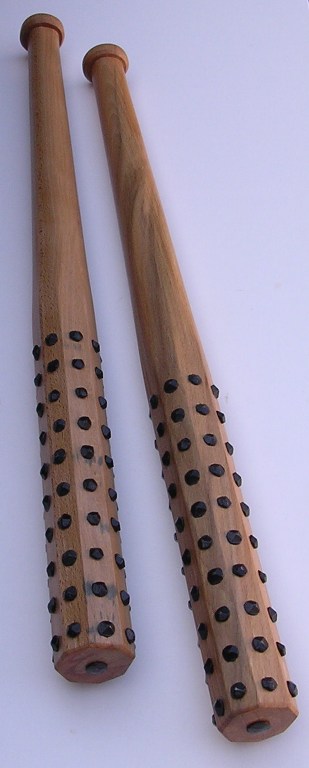
 Attachment: 79.59 KB Attachment: 79.59 KB
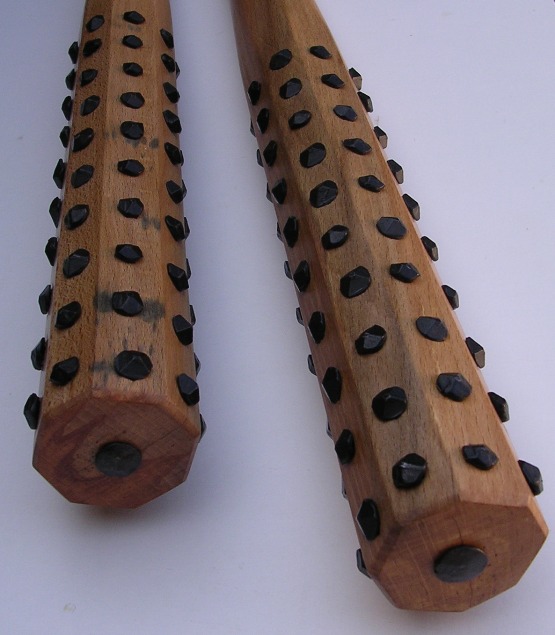
 Attachment: 46.3 KB Attachment: 46.3 KB
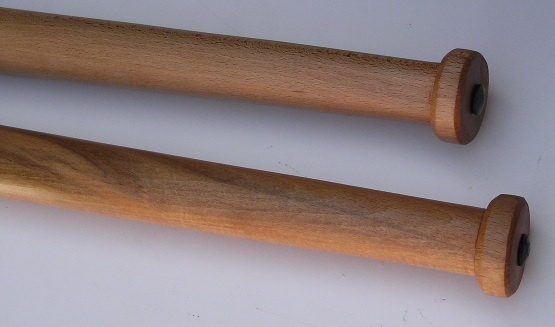
|
|
  |
 |
Ben Bouchard

Location: Bar Harbor, ME Joined: 17 Sep 2006
Posts: 47
|
 Posted: Sun 10 Apr, 2011 10:13 am Post subject: Posted: Sun 10 Apr, 2011 10:13 am Post subject: |
 |
|
Looks like quite the pumpkin slayer! 
|
|
    |
 |
Eric S

|
 Posted: Sun 10 Apr, 2011 11:39 am Post subject: Posted: Sun 10 Apr, 2011 11:39 am Post subject: |
 |
|
Nice kanabo!
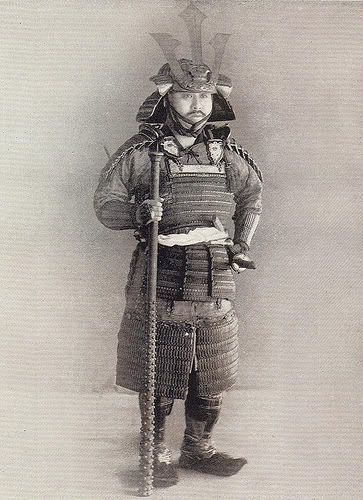
|
|
   |
 |
|
Ken Speed
|
 Posted: Sun 10 Apr, 2011 12:25 pm Post subject: Re: Studded Maces Posted: Sun 10 Apr, 2011 12:25 pm Post subject: Re: Studded Maces |
 |
|
Julian told us, " The woodwork was entirely shaped by hand (not turned on a lathe) with spokeshave, scraper then sandpapered."
Wow Julian! I"d have never guessed they weren't turned if you hadn't mentioned it. Very impressive work!
|
|
  |
 |
|
Julian Reynolds
Location: United Kingdom Joined: 30 Mar 2008
Posts: 271
|
 Posted: Sun 10 Apr, 2011 1:39 pm Post subject: Posted: Sun 10 Apr, 2011 1:39 pm Post subject: |
 |
|
Thanks,
The thing with lathes, is that if you're not careful, you end up with something that looks like a baseball bat with nails in. So carving it from a square billet gives you a completely different look (and feel in the hand).
That kanabo is impressive - I am a big fan of 'wooden weapons', but more particularly from 'primitive' cultures. Nevertheless, once you put a load of iron studs in a piece of wood, you turn it into something altogether more destructive.
Julian
|
|
  |
 |
Eric S

|
 Posted: Sun 10 Apr, 2011 5:09 pm Post subject: Posted: Sun 10 Apr, 2011 5:09 pm Post subject: |
 |
|
| Julian Reynolds wrote: |
That kanabo is impressive - I am a big fan of 'wooden weapons', but more particularly from 'primitive' cultures. Nevertheless, once you put a load of iron studs in a piece of wood, you turn it into something altogether more destructive.
Julian |
Yes agree, there is an added element when you see spikes of studs.
Here are another two kanabo and a ararebo which is a small kanabo.
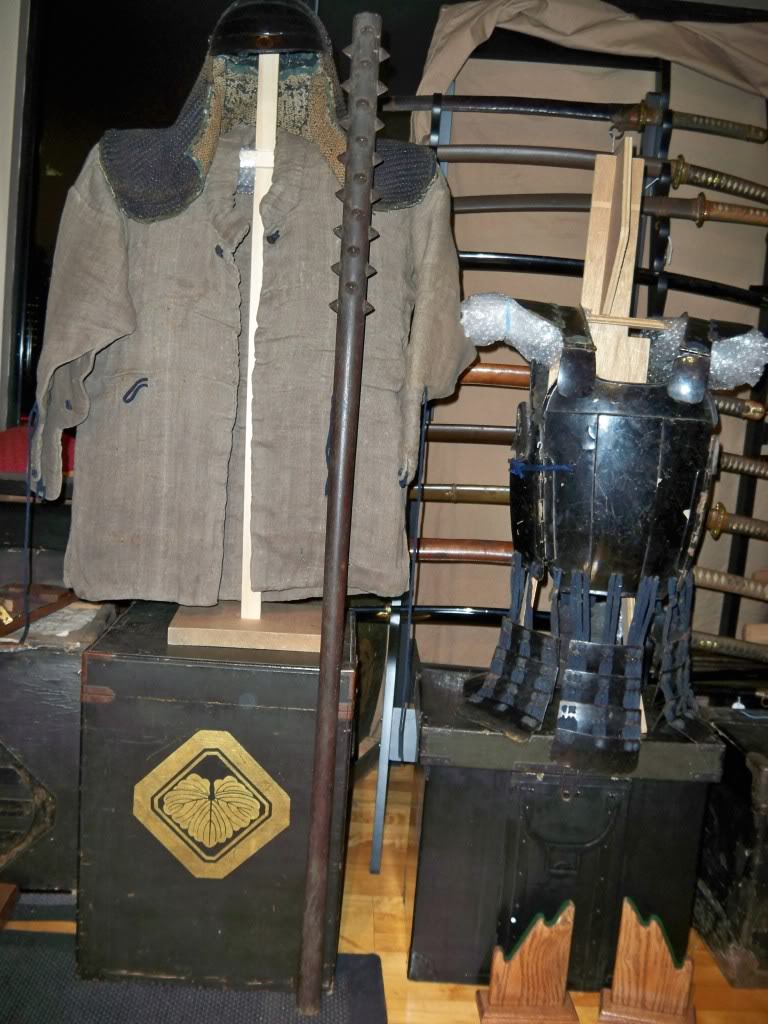
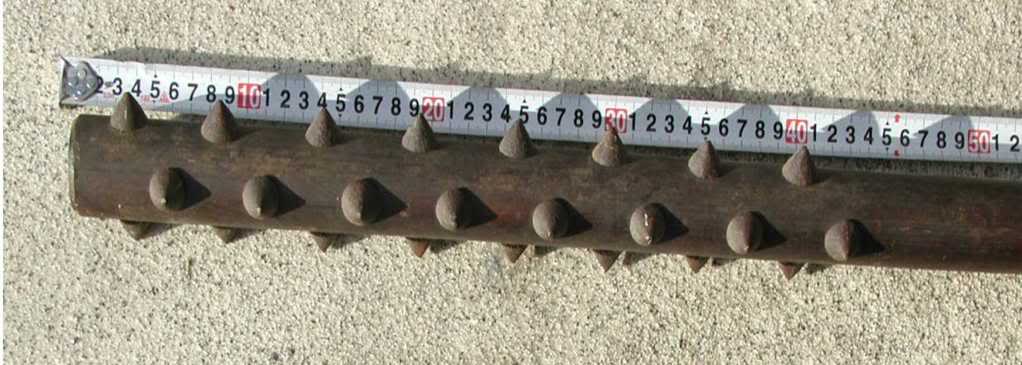
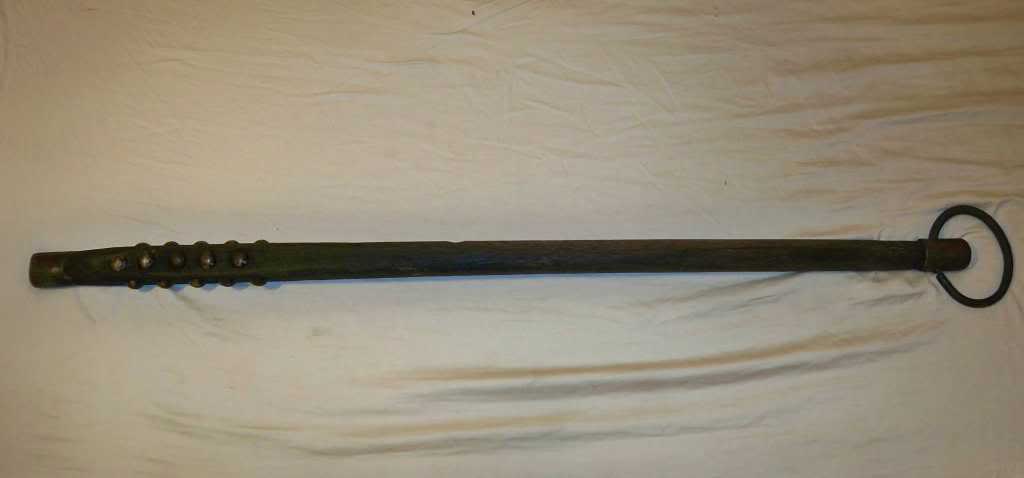
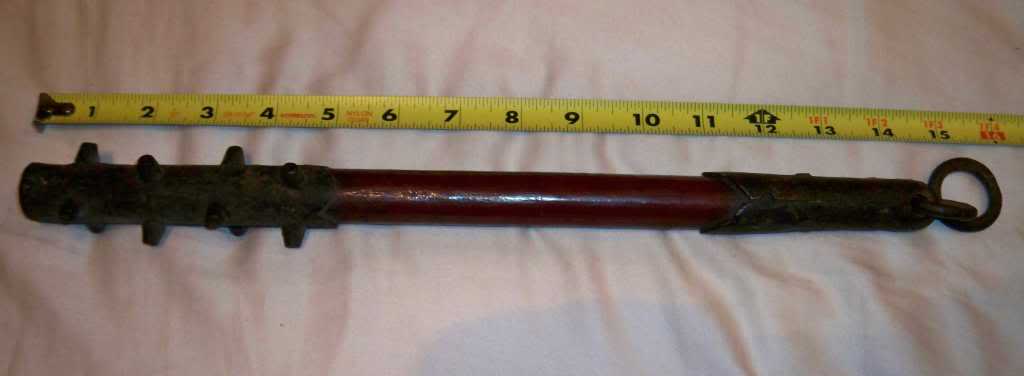

|
|
   |
 |
Johan Gemvik

|
 Posted: Tue 12 Apr, 2011 12:18 am Post subject: Posted: Tue 12 Apr, 2011 12:18 am Post subject: |
 |
|
Great set of sticks with a lovely wax finish!
Some say you can't break bones with wood, I call that complete bull. Sure wouldn't want any of my bones saying hello to these. I have some beech I was thinking of making a mace from and it sure is dense and stiff, much stiffer than ash so I definitely think you made the right choice there.
How about making a Goddendach with spikes? Same but different. 
"The Dwarf sees farther than the Giant when he has the giant's shoulder to mount on" -Coleridge
|
|
  |
 |
Aaron Morris

Location: pueblo,colorado Joined: 03 May 2009
Posts: 26
|
 Posted: Tue 12 Apr, 2011 7:40 am Post subject: Posted: Tue 12 Apr, 2011 7:40 am Post subject: |
 |
|
|
those are really nice looking, how much shaping did you have to do them what were they shaped like before you started on them
|
|
  |
 |
|
Julian Reynolds
Location: United Kingdom Joined: 30 Mar 2008
Posts: 271
|
 Posted: Tue 12 Apr, 2011 2:29 pm Post subject: Posted: Tue 12 Apr, 2011 2:29 pm Post subject: |
 |
|
Johan,
Thanks. I would have to agree with you about their damage potential. I would be very reluctant to see them used against even an armoured opponent, but weapons such as these went on being used long after armour was obsolete. The damage something like these could do against an unarmoured opponent (such as a soldier in the trenches - weapons such as these were used as 'trench clubs') would be quite devastating and certainly incapacitating or even fatal.
As for the Goedendag, I'm afraid I prefer the idea of a spiked flail (such as the Hussite flail often discussed on here - use the search function). Possibly my next project......
Aaron,
These started life as a 6.5cm (2 1/2") square block of beech, 1m (3') long. They were ripped to rough size on a bandsaw and all the rest of the work was done by hand with spokeshave, knife and rasp, finished with a scraper then fine sandpapered by hand (no machine!). As you would expect, there's a tiny amount of variation (+/- a couple of mm at most) in the widths of the 8 flats that go to make up the straight (studded) octagonal section, and the rounded handle part feels very slightly 'obround' ie. not truly circular in cross section as you would get on a lathe turned section. But then, as said before, I wasn't making a baseball bat with nails in!
Julian
 Attachment: 76.63 KB Attachment: 76.63 KB
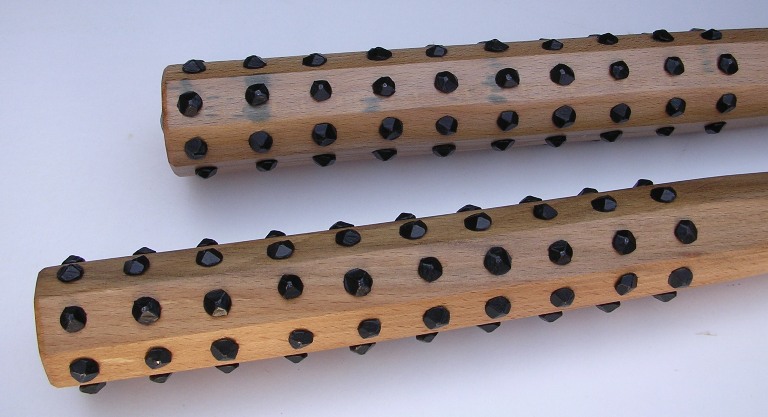
|
|
  |
 |
Gene W

Location: The South Of England Joined: 01 Dec 2010
Posts: 116
|
 Posted: Fri 15 Apr, 2011 1:05 am Post subject: Posted: Fri 15 Apr, 2011 1:05 am Post subject: |
 |
|
I think they look great Julian.
Can you show us what the studs look like on the underside?
Best
Gene
|
|
  |
 |
|
Julian Reynolds
Location: United Kingdom Joined: 30 Mar 2008
Posts: 271
|
 Posted: Fri 15 Apr, 2011 11:58 pm Post subject: Posted: Fri 15 Apr, 2011 11:58 pm Post subject: |
 |
|
Not sure what you mean, Gene.
The head of this mace is octagonal: the studs go all the way round, 10 on each face.
As for the studs themselves, they are cut-down rosehead studs, 1/2" diameter heads, cut down to around 3/4-1" shank (see low res pic below, ones on the left - you can see how the traditional rosehead nail on the right has too small a head to be any good for studding).
Julian
 Attachment: 1.94 KB Attachment: 1.94 KB

|
|
  |
 |
|
|

